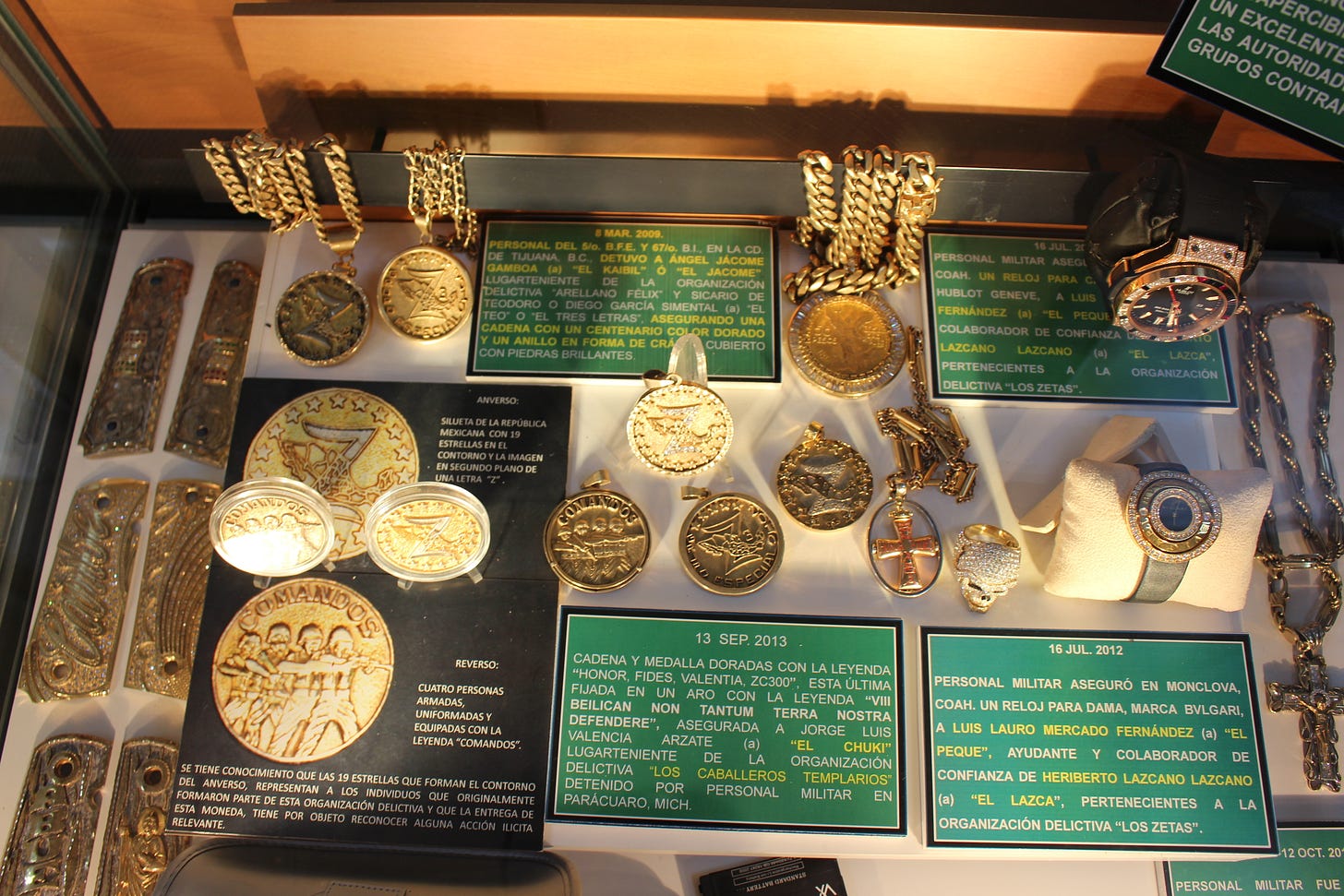Narco Bling and Dirty-Money Laundromats
Part Two on the twisted world of drug wealth and cartel-omics
Para leer en español, click aquí.
When high-end jewelry seller Carlos went to the finca, or ranch, of a cocaine trafficker in Colombia he was nervous. Not only was he with dangerous men but he had three top watches on him, worth well over a million dollars in total. These are not the kind of time pieces you can find in shops but unique editions made by the top brands, especially in Switzerland, for the luxury market; such editions can sell for hundreds of thousands or even millions of dollars each.
“They were given to me as a consignment,” Carlos tells me. “If one of these guys goes rogue, they could just take them. Or if I get stopped by the police, they could take them.”
All went well, however, and the narco brought the most expensive piece that Carlos had, a DeWitt watch, for a whopping $700,000. Of course, he paid in cash.
It wasn’t a one-off fluke. Carlos was on a spree for eight years selling top jewelry to clients in Colombia, Mexico and elsewhere in Latin America during a boom period in the luxury watch business. His customers were almost all drug traffickers and organized crime figures. But the Swiss companies adored him.
“You look amazing with the people in Switzerland because you are selling a lot. They fucking love you. You have no idea. You are making their budgets. You become a hero,” he said. “They really love you and this is contagious. I never did alcohol or drugs. My turn-on was the sales.”
This story is the second chapter in a three-part series on the cash flow of cartels, or cartel-omics. Money is the life blood of organized crime, the reason thousands of operatives work together to flood America with drugs, run human smuggling, steal tanker loads of crude oil, and shake down businesses. This hunger for cash, rather than any ideological motive, drives rampant violence and provides the resources to hire legions of killers and pay off police and politicians.
In part one here, I go into how much money cartels really make from narcotics and other rackets and who gets it. In part three, I will explore asset seizures and how the U.S. government ends up with so much narco wealth. Here in part two, I look at how the cartel cash is spent, stashed and laundered.
Narcos and other crime bosses love to buy jewelry, diamonds and luxury watches. It’s a way to store value, to keep wealth over time, as the treasure can be stashed and sold in the future, even after a prison sentence. And narcos just adore the glamor of having these pieces. The luxury brands take advantage of this and enrich themselves from the super high-end market. It even keeps some of these companies afloat. Carlos (I’ve changed his name on his request and for his safety) gave CrashOut an incredible breakdown of how it works.
Of course, Carlos wouldn’t be as dumb as to get on a plane from Colombia back to Switzerland with the $700,000 in cash for the watch. He held onto the stash of bills for a night in a hotel and that was risky enough for him. But when he got such payments in Colombia or Mexico, he would move the money to Europe by going to…
Sorry folks, you need to subscribe to read the rest of this story. But it’s only the price of a cuppa coffee and you get the complete archive including exclusive interviews with top players and maps of cartel territory. And now is a great time to subscribe as we will be following these issues with detailed reports you can trust as big things break in the coming months.


